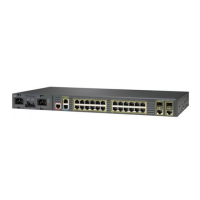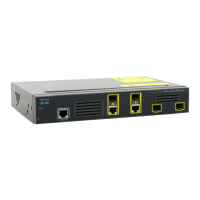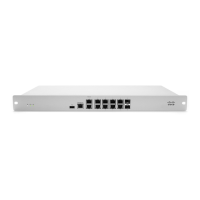9-7
Cisco ME 3400 Ethernet Access Switch Software Configuration Guide
OL-9639-07
Chapter 9 Configuring Interfaces
Understanding Interface Types
By default, dual-purpose ports are user-network interfaces (UNIs) and SFP-only module ports are
network node interfaces (NNIs). By default, the switch dynamically selects the dual-purpose port media
type that first links up. However, you can use the media-type interface configuration command to
manually select the RJ-45 connector or the SFP module connector. For information about configuring a
dual-purpose port, see the
“Configuring a Dual-Purpose Port” section on page 9-18.
Each dual-purpose port has two LEDs: one shows the status of the SFP module port, and one shows the
status of the RJ-45 port. The port LED is on for whichever connector is active. For more information
about the LEDs, see the hardware installation guide.
Connecting Interfaces
Devices within a single VLAN can communicate directly through any switch. Ports in different VLANs
cannot exchange data without going through a routing device. With a standard Layer 2 switch, ports in
different VLANs have to exchange information through a router.
By default, the Cisco ME switch provides VLAN isolation between UNIs or ENIs. UNIs and ENIs
cannot exchange traffic unless they are changed to NNIs or assigned to a UNI-ENI community VLAN.
By using the switch with routing enabled, when you configure both VLAN 20 and VLAN 30 with an
SVI to which an IP address is assigned, packets can be sent from Host A to Host B directly through the
switch with no need for an external router (
Figure 9-1).
Figure 9-1 Connecting VLANs with the Switch
When the metro IP access image is running on the switch, routing can be enabled on the switch.
Whenever possible, to maintain high performance, forwarding is done by the switch hardware. However,
only IP Version 4 packets with Ethernet II encapsulation can be routed in hardware. The routing function
can be enabled on all SVIs and routed ports. The switch routes only IP traffic. When IP routing protocol
parameters and address configuration are added to an SVI or routed port, any IP traffic received from
these ports is routed. For more information, see
Chapter 35, “Configuring IP Unicast Routing,”
Chapter 42, “Configuring IP Multicast Routing,” and Chapter 43, “Configuring MSDP.”
Host A
SVI 1172.20.128.1 172.20.129.1SVI 2
Layer 3 switch
with routing enabled
VLAN 20
Host B
VLAN 30
101350
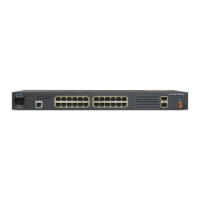
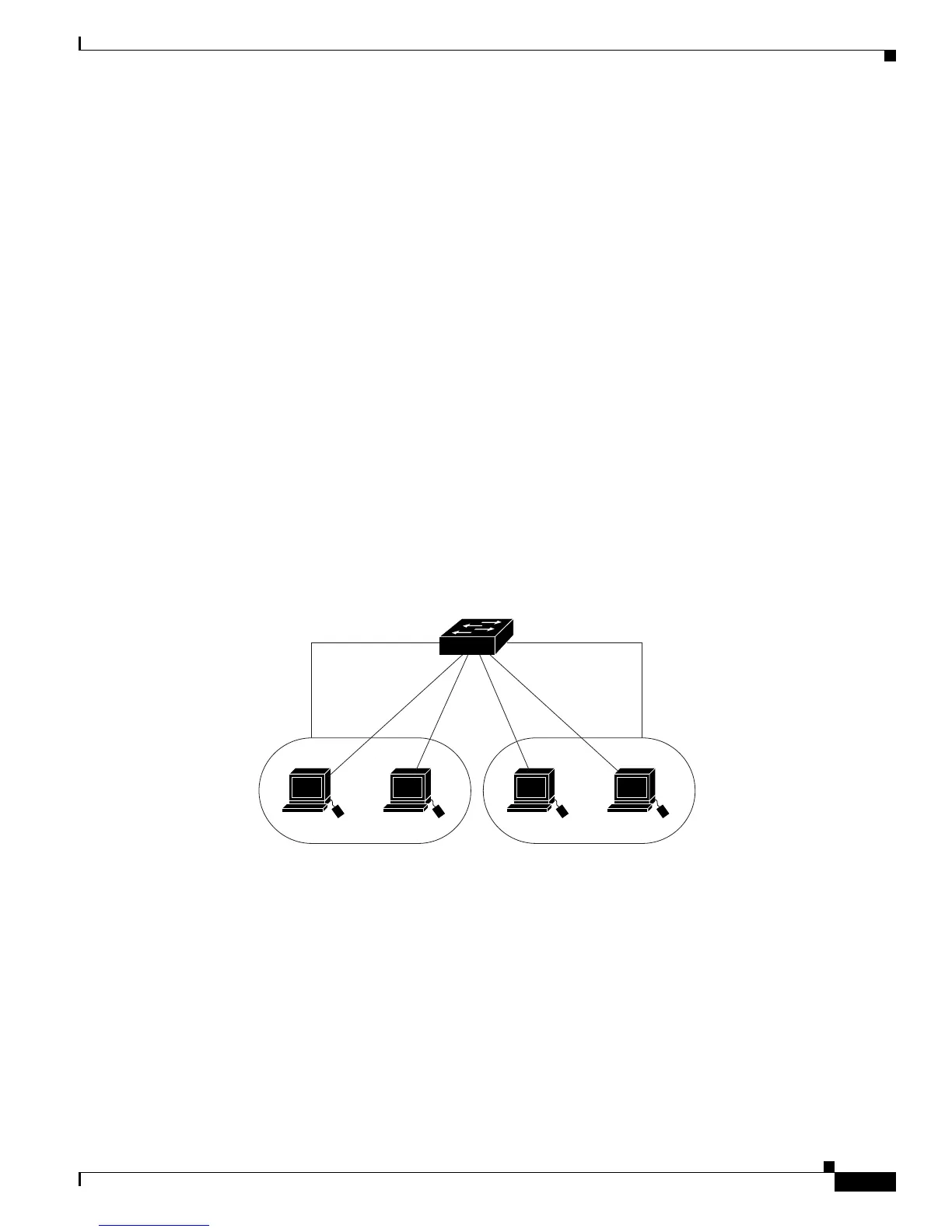